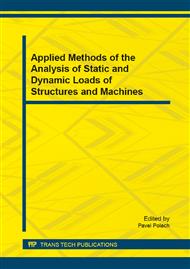p.377
p.381
p.385
p.389
p.393
p.397
p.403
p.407
p.411
Compression Testing of Gypsum-Based Composite Reinforced by Recycled Wires from Automobile Tires
Abstract:
The use of recycled materials is nowadays greatly promoted and these are exploited in many industries, including construction and civil engineering. It is advantageous and efficient to exploit mainly those materials that cannot find their use in any other application. The steel wires from old automobile tires are a perfect example – they can be used as a dispersed reinforcement to stabilize subsoil in railway construction. In order to test the structural performance of the recycled wires as well as the composite behavior, gypsum was chosen a model matrix material. Such approach resulted in a relatively cheap gypsum-based composite material effectively combining gypsum as the material able to resist relatively high levels of compression and recycled wire reinforcement from old automobile tires, which is able to transfer tensile stress. The material can be removed from a formwork after less than 20 minutes of curing and immediately loaded. The study presents the results of a compression test carried out on three different materials – the reference sample was composed of a pure gypsum matrix, while the other two were reinforced by the dispersed wire reinforcement, which has been poorly and perfectly compacted. The results indicate the huge potential of the recycled material for the improvement of soils and brittle materials.
Info:
Periodical:
Pages:
393-396
Citation:
Online since:
February 2015
Authors:
Price:
Сopyright:
© 2015 Trans Tech Publications Ltd. All Rights Reserved
Share:
Citation:


